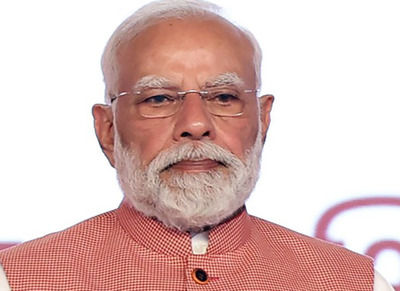
- The use of three major technologies in vision
- Aadhaar card will become a secure and data-centric digital ecosystem
UIDAI (Unique Identification Authority of India) has created a mega blueprint called “Aadhaar Vision 2032”, which will incorporate advanced technologies like AI (Artificial Intelligence), blockchain, and quantum computing. This step is considered to be very important to secure the Aadhaar system from cyber criminals in the future and create the world’s most advanced digital ID frameworks.
Black Friday Sale 2025: Amazing deals on everything from expensive iPhone to PS5; The sale will start on this day
What is the purpose of Aadhaar Vision 2032?
The aim of UIDAI is that in the coming years Aadhar Card It is going to be made into a smart, secure and data-centric digital ecosystem, not just an identity card. This vision will utilize three key technologies, including AI (Artificial Intelligence), Blockchain, and Quantum Computing. (Photo Courtesy – Facebook)
AI (Artificial Intelligence): The Aadhaar system is set to become even smarter with the help of AI, reducing the risk of fraud, duplicate identification and wrong data entry.
Blockchain: It will help secure Aadhaar data in a decentralized network, thereby limiting the impact of a central server hack.
Quantum Technology: It will provide quantum-resistant encryption to protect against future cyber attacks.
The UIDAI has claimed that after the implementation of Vision 2032, no Indian’s digital identity can be “cloned or hacked”.
Who is creating the blueprint for the future?
UIDAI has formed an expert committee, headed by Neelkanth Mishra, to monitor this major change. The committee includes several luminaries from technology, education and governance, including Vivek Raghavan (Sarvam AI), Dheeraj Pandey (Founder of Nutanix) and Professor Anil Jain (Michigan State University). Their task is to prepare the final document of Vision 2032, which will determine the direction the Aadhaar system will take in the next ten years.
This technology in daily use will disappear soon! The whole world will change after 2030, you will also feel your life incomplete
Relation to Digital Privacy and DPDP Act
UIDAI has also clarified that the new Aadhaar framework will be fully compliant with the Digital Personal Data Protection (DPDP) Act. This means that users’ data will be kept safe, and will be used under “Consent-based Access”. One of the main objectives of this vision is ‘Trust by Design’, i.e. to create a system where the user should have complete control over his data and no third party has unauthorized access to it.
FAQs ( Questions):
What is Aadhaar Card?
Aadhaar card is a 12-digit unique identification number issued by the Government of India, based on biometric and demographic information of citizens.
What documents are required to make Aadhaar card?
PAN card or document showing date of birth, address proof (eg voter ID card, electricity bill, passport), photograph and biometric information (thumb, eye scan)
What precautions should be taken to keep Aadhaar card safe?
Do not share Aadhaar number in public. Keep e-Aadhaar PDF password protected. Do not share OTP/UIDAI information to anyone.
Where can Aadhaar card be used?
Bank account opening, PAN linking, availing government schemes, mobile SIM card registration, Income Tax return submission, etc.
-
Anirban plays 4th successive under-par round as McKibbin clinches Hong Kong Open

-
Grapes stay fresh and firm for longer if you stop doing 1 thing

-
Horror as man dies in Yorkshire plane crash

-
PM Modi expresses grief over Rajasthan accident, announces aid for victims' families

-
Chhattisgarh farmer honoured with Khubchand Baghel Krishak Ratna award for organic innovation
